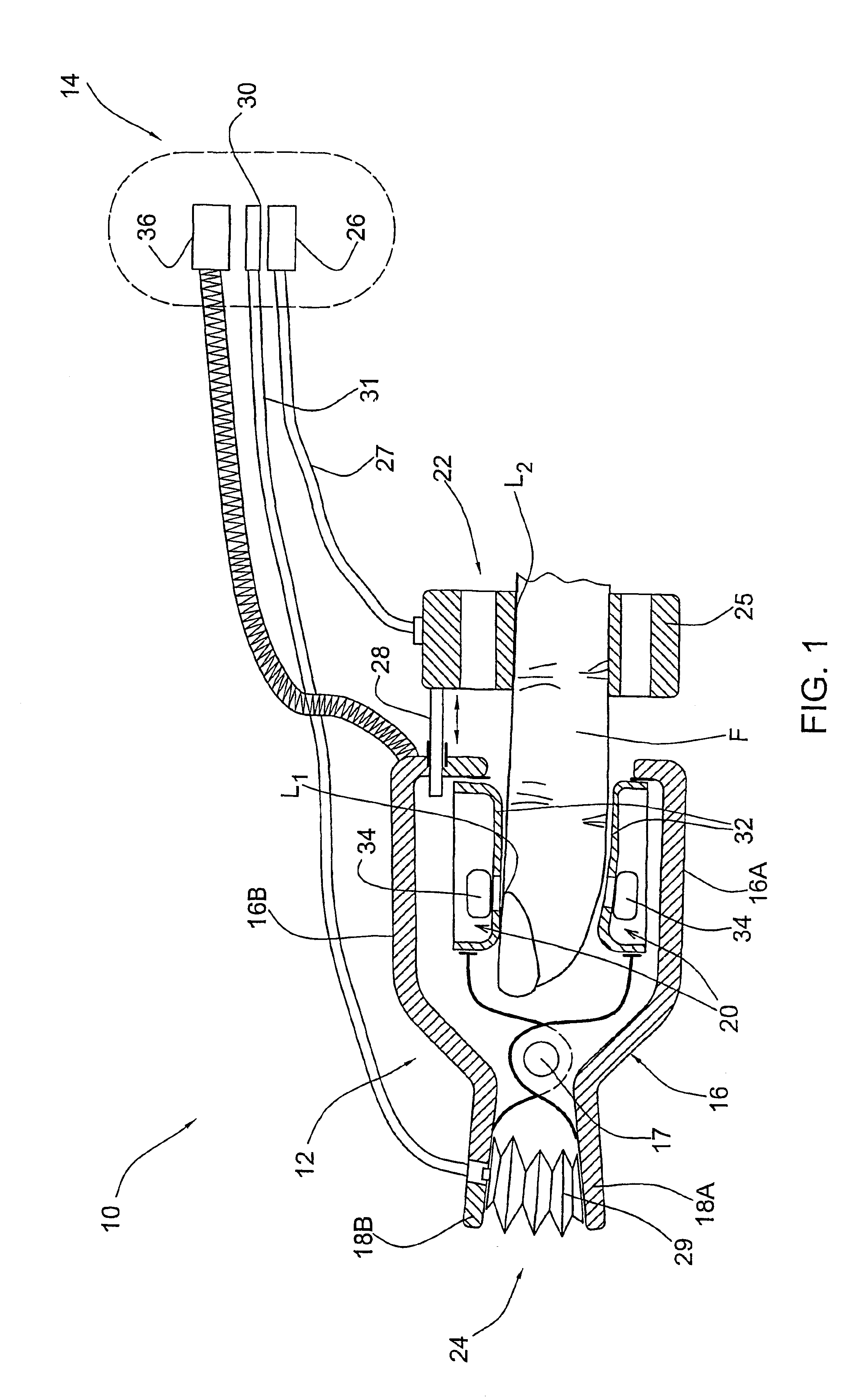Probe for use in non-invasive measurements of blood related parameters
- Summary
- Abstract
- Description
- Claims
- Application Information
AI Technical Summary
Benefits of technology
Problems solved by technology
Method used
Image
Examples
Embodiment Construction
[0038]Referring to FIG. 1, there is illustrated a probe device, generally designated 10, applied to a patient's finger F for performing the non-invasive measurement of the patient's blood parameters, such as oxygen saturation, blood pressure or the concentration of various substances, such as hemoglobin, glucose, cholesterol and other analyte concentrations. The probe 10 is in the form of a finger holder 12 mounted on the patient's finger F, and is coupled to a control system 14.
[0039]The finger holder 12 is in the form of a clip member 16 having clamping legs—two legs 16A and 16B in the present example, pivotal about an axis 17, for securing the patient's finger F therebetween. A pair of manipulating arms 18A and 18B operates the pivotal movement of the clamping legs to attach the device to the patient's finger. The clip member 16 carries a measuring unit 20 mounted on its inner side so as to apply optical measurements to a measurement location L1 on the patient's finger. Further p...
PUM
 Login to View More
Login to View More Abstract
Description
Claims
Application Information
 Login to View More
Login to View More - R&D
- Intellectual Property
- Life Sciences
- Materials
- Tech Scout
- Unparalleled Data Quality
- Higher Quality Content
- 60% Fewer Hallucinations
Browse by: Latest US Patents, China's latest patents, Technical Efficacy Thesaurus, Application Domain, Technology Topic, Popular Technical Reports.
© 2025 PatSnap. All rights reserved.Legal|Privacy policy|Modern Slavery Act Transparency Statement|Sitemap|About US| Contact US: help@patsnap.com



